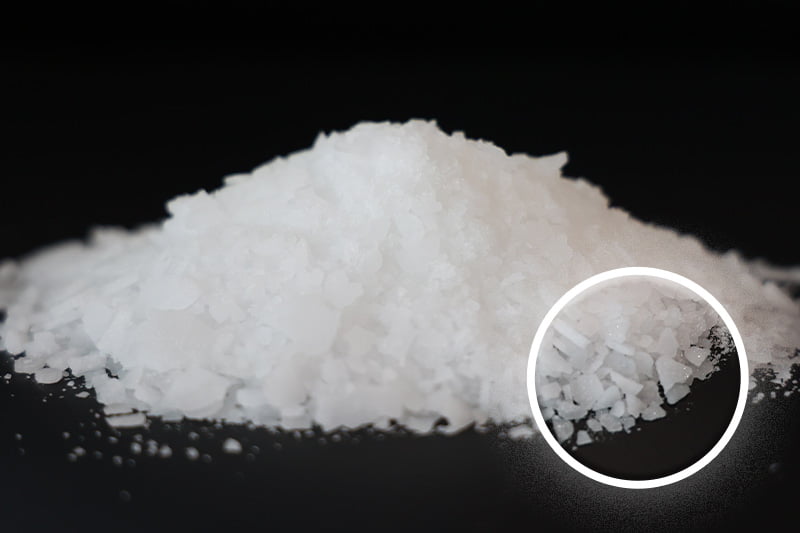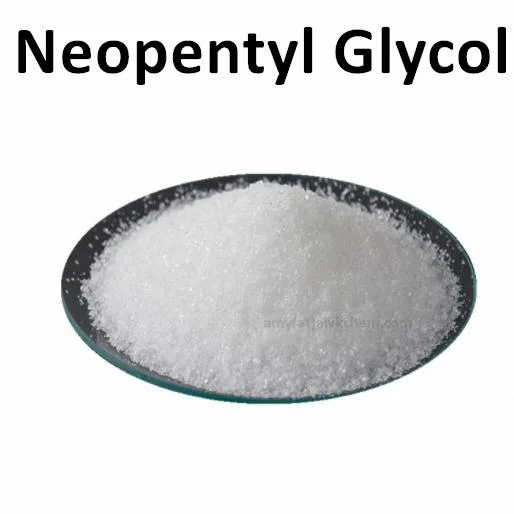مقدمة
Neopentyl glycol (NPG) is a versatile chemical compound widely used in various industries, including plastics, paints, and coatings. One of the critical properties of neopentyl glycol is its heat capacity, which plays a significant role in determining its suitability for different applications. In this comprehensive guide, we will delve into the concept of neopentyl glycol heat capacity, exploring its importance, factors affecting it, and how it is measured. Whether you are a chemist, an engineer, or simply interested in understanding the thermal properties of NPG, this guide will provide you with valuable insights.
فهم نيوبينتيل جلايكول

Before diving into the specifics of neopentyl glycol heat capacity, it is essential to understand what neopentyl glycol is and its common applications.
ما هو نيوبينتيل جلايكول؟
Neopentyl glycol is an organic compound with the chemical formula C5H12O2. It is a colorless, water-soluble solid that is primarily used as an intermediate in the production of polyesters, alkyd resins, and plasticizers. Its unique molecular structure, featuring two hydroxyl groups attached to a quaternary carbon atom, imparts excellent stability and resistance to hydrolysis, making it highly valuable in various industrial applications.
Common Applications of Neopentyl Glycol
Neopentyl glycol is widely used in industries such as:
- البلاستيك: As a building block for polyesters and polyurethanes, NPG enhances durability and flexibility.
- الدهانات والطلاءات: NPG is a key component in the production of alkyd resins, providing improved gloss and weather resistance.
- مواد لاصقة: Its high thermal stability makes it suitable for adhesives used in demanding environments.
- زيوت التشحيم: NPG-based lubricants exhibit excellent oxidation stability, making them ideal for high-temperature applications.
The Importance of Heat Capacity in Chemical Compounds
Heat capacity is a fundamental thermodynamic property that measures the amount of heat required to raise the temperature of a substance by one degree Celsius. Understanding the heat capacity of neopentyl glycol is crucial for several reasons:
Why is Heat Capacity Important?
- الاستقرار الحراري: Knowing the heat capacity helps determine how neopentyl glycol will behave under different temperature conditions, which is vital for applications requiring high thermal stability.
- كفاءة الطاقة: In industrial processes, optimizing the heat capacity of materials like NPG can lead to significant energy savings.
- Process Design: Engineers rely on accurate heat capacity data to design efficient heating and cooling systems in manufacturing processes.
Factors Affecting Heat Capacity
Several factors influence the heat capacity of neopentyl glycol, including:
- التركيب الجزيئي: The unique structure of NPG, with its quaternary carbon atom, affects how it absorbs and retains heat.
- درجة حرارة: Heat capacity can vary with temperature, and understanding this relationship is essential for accurate process control.
- Phase State: The heat capacity of NPG may differ between its solid and liquid states, impacting its performance in different applications.
Measuring Neopentyl Glycol Heat Capacity
Accurate measurement of neopentyl glycol heat capacity is critical for its application in various industries. Several methods are used to determine this property, each with its advantages and limitations.
Common Methods for Measuring Heat Capacity
- Differential Scanning Calorimetry (DSC): DSC is a widely used technique that measures the heat flow associated with temperature changes in a sample. It provides precise data on the heat capacity of NPG over a range of temperatures.
- Adiabatic Calorimetry: This method measures the heat capacity by observing the temperature change of a sample in an insulated environment, minimizing heat exchange with the surroundings.
- Modulated Temperature Calorimetry: This advanced technique combines elements of DSC and adiabatic calorimetry, allowing for more detailed analysis of heat capacity variations with temperature.
Factors to Consider in Measurement
- Sample Purity: Impurities in neopentyl glycol can affect heat capacity measurements, so high-purity samples are essential.
- Calibration: Accurate calibration of instruments is necessary to obtain reliable data.
- Experimental Conditions: Temperature range, heating rate, and sample size can all influence the results, so careful control of experimental conditions is required.
Neopentyl Glycol Heat Capacity: Experimental Data and Analysis
In this section, we will examine experimental data on the heat capacity of neopentyl glycol, providing a detailed analysis of its thermal properties. The table below summarizes heat capacity data for neopentyl glycol at various temperatures:
| Temperature (°C) | Heat Capacity (J/g·°C) |
|---|---|
| 25 | 1.65 |
| 50 | 1.70 |
| 75 | 1.75 |
| 100 | 1.80 |
| 125 | 1.85 |
| 150 | 1.90 |
Analysis of Data
The data shows a gradual increase in the heat capacity of neopentyl glycol with temperature. This trend is typical for most substances, as higher temperatures generally lead to increased molecular motion, requiring more heat to raise the temperature further.
Key Observations
- Temperature Dependence: As temperature increases from 25°C to 150°C, the heat capacity of NPG rises, indicating that the substance requires more energy to increase its temperature at higher temperatures.
- Practical Implications: This temperature dependence is crucial for industries that use NPG in processes involving significant temperature variations, such as plastics manufacturing and coatings.
Implications for Industrial Applications
The heat capacity of neopentyl glycol has direct implications for its industrial applications. For instance, in processes requiring precise temperature control, understanding the heat capacity can help in designing more efficient heating systems, reducing energy consumption, and improving product quality.
Comparison with Other Glycols

Neopentyl glycol’s heat capacity can be compared with other similar glycols to understand its unique properties and advantages.
Neopentyl Glycol vs. Ethylene Glycol
- Heat Capacity: Neopentyl glycol generally has a higher heat capacity than ethylene glycol, making it more suitable for applications requiring better thermal stability.
- الاستقرار الحراري: The quaternary carbon structure of NPG provides greater resistance to thermal degradation compared to ethylene glycol, which is particularly advantageous in high-temperature applications.
Neopentyl Glycol vs. Propylene Glycol
- Heat Capacity: Propylene glycol has a slightly lower heat capacity than neopentyl glycol, which can impact its efficiency in thermal management applications.
- Application Suitability: While both glycols are used in similar industries, neopentyl glycol’s higher heat capacity makes it preferable for applications where maintaining a consistent temperature is critical.
استنتاج
Neopentyl glycol’s heat capacity is a vital property that influences its performance in various industrial applications. From enhancing thermal stability in coatings to optimizing energy efficiency in plastics production, understanding and accurately measuring the heat capacity of NPG is essential for its effective use. This comprehensive guide has provided a detailed overview of neopentyl glycol heat capacity, exploring its significance, factors affecting it, and methods for its measurement. By leveraging this knowledge, industries can make informed decisions to maximize the benefits of neopentyl glycol in their processes.
التعليمات
What is the heat capacity of neopentyl glycol?
The heat capacity of neopentyl glycol refers to the amount of heat required to raise the temperature of a unit mass of neopentyl glycol by 1 degree Celsius. The heat capacity is an important parameter for assessing the thermal properties of neopentyl glycol.
What is the specific heat capacity value of neopentyl glycol?
The specific heat capacity value of neopentyl glycol can vary under different experimental conditions. Generally, you can refer to relevant Material Safety Data Sheets (MSDS) or specialized literature for accurate values of the heat capacity of neopentyl glycol.
How does the heat capacity of neopentyl glycol affect its industrial applications?
The heat capacity of neopentyl glycol influences its performance in applications such as coolants, lubricants, and reaction media. The ability of neopentyl glycol to store and transfer energy is largely determined by its heat capacity.
How is the heat capacity of neopentyl glycol measured?
The heat capacity of neopentyl glycol can be measured using techniques like Differential Scanning Calorimetry (DSC) or other thermal analysis methods that specifically analyze the heat capacity.
How does the heat capacity of neopentyl glycol differ from similar compounds?
The heat capacities of different compounds, such as ethylene glycol or glycerol, may differ. This difference in heat capacity can affect the selection of neopentyl glycol for specific applications compared to other compounds.
Why is the heat capacity of neopentyl glycol important?
Understanding the heat capacity of neopentyl glycol is crucial as it helps predict how neopentyl glycol behaves during heating or cooling processes, achieving higher efficiency and safety in design and operation based on its heat capacity.
How does the heat capacity of neopentyl glycol affect its storage and transportation?
Understanding the heat capacity of neopentyl glycol aids in determining optimal storage conditions. Properly managing the heat capacity characteristics of neopentyl glycol helps prevent performance degradation or safety hazards due to temperature changes.
How does the heat capacity of neopentyl glycol change at high temperatures?
As temperature increases, the heat capacity of neopentyl glycol may change, usually showing a nonlinear relationship. The exact behavior of the heat capacity at high temperatures needs to be assessed experimentally.
What role does the heat capacity of neopentyl glycol play in chemical reactions?
In chemical reactions, the heat capacity of neopentyl glycol can significantly affect thermal management, influencing the reaction rates and product selectivity based on the heat capacity of neopentyl glycol.
How can the heat capacity of neopentyl glycol be optimized for specific applications?
By adjusting operating conditions or adding other components, the heat capacity of neopentyl glycol can be optimized to meet specific industrial or laboratory application needs, focusing on improving the overall heat capacity performance.



